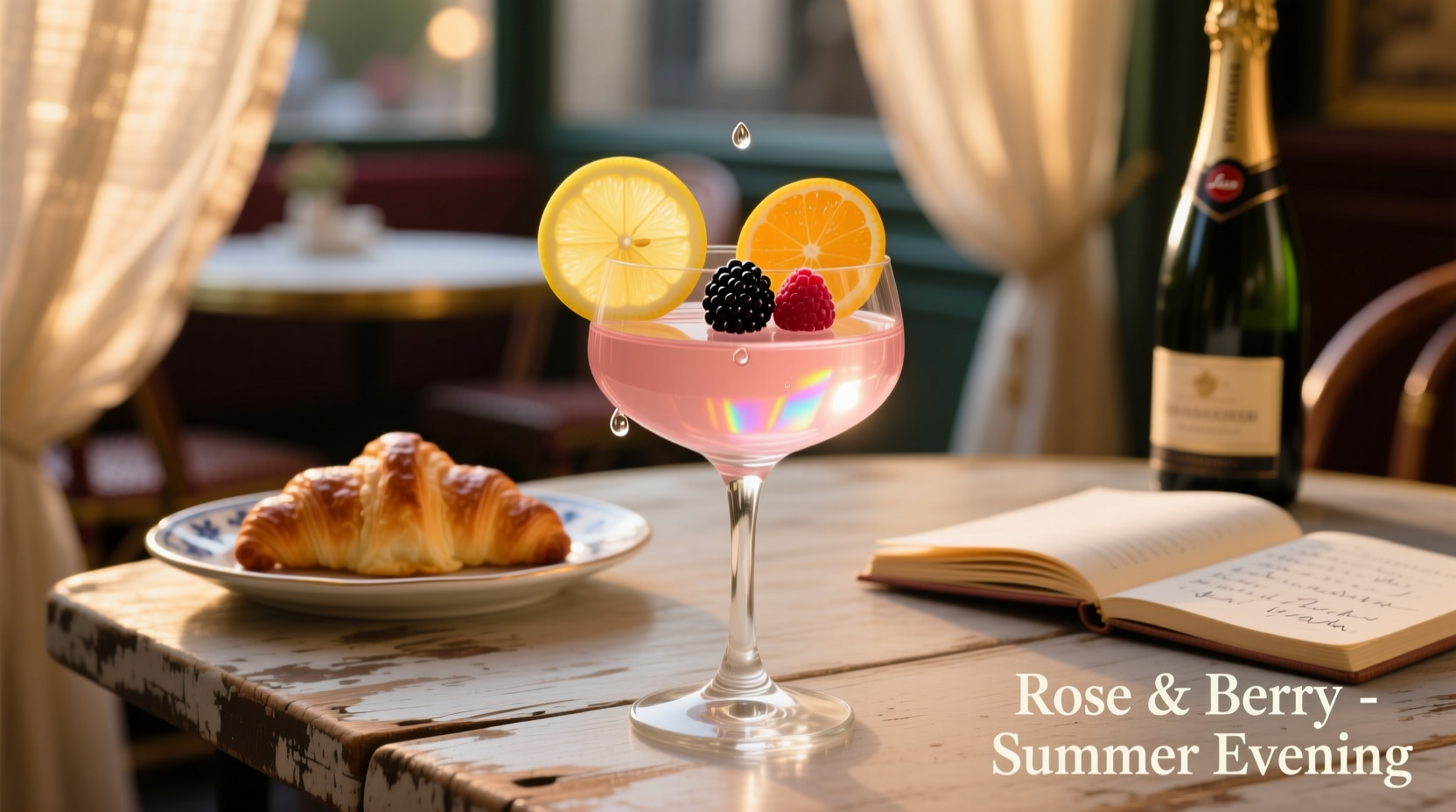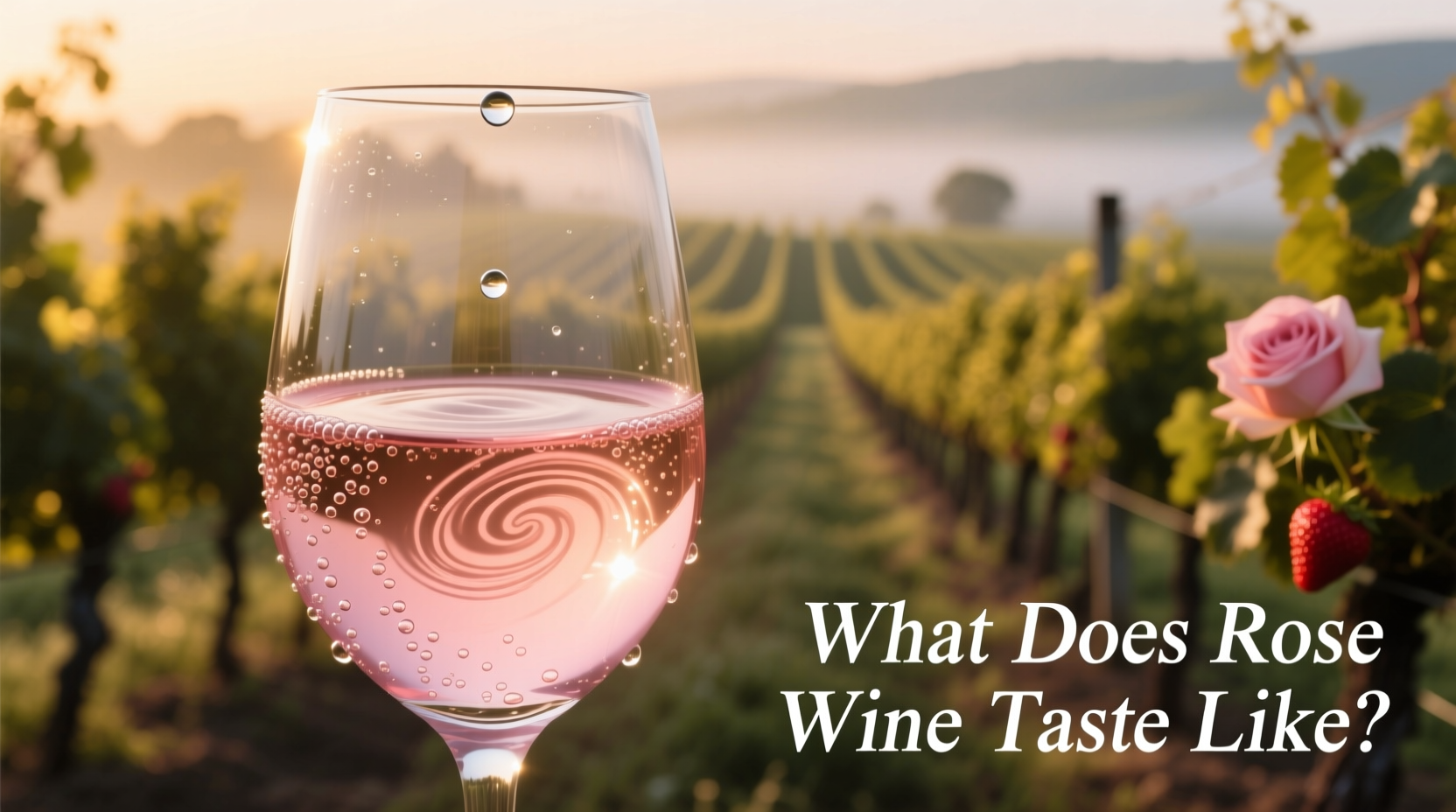If you've ever wondered what does rose wine taste like, the answer is refreshingly complex: most quality dry rose wines offer bright red fruit flavors like strawberry, raspberry, and watermelon with citrus notes, floral hints, and crisp acidity. The best examples balance fruitiness with minerality and structure, never cloying sweetness.
Understanding rose wine flavor profiles begins with recognizing it's not a single style but a diverse category spanning from pale, bone-dry Provençal styles to fruit-forward New World interpretations. Unlike the sweet "blush" wines of the 1990s, modern premium rose focuses on freshness and complexity. The taste experience varies significantly based on grape variety, production method, and region—factors we'll unpack to help you find bottles matching your palate.
Decoding Rose Wine Flavor Components
When evaluating what rose wine tastes like, professional tasters identify five key elements that create its distinctive profile:
- Fruit characteristics: Expect red berry notes (strawberry, raspberry, cherry) rather than dark fruits found in red wines. Watermelon and citrus (grapefruit, orange zest) frequently appear.
- Acidity level: High acidity provides the refreshing quality that makes rose perfect for warm weather. Well-balanced acidity keeps the wine from tasting flat.
- Minerality: Many quality roses show subtle stony or saline notes, particularly those from coastal regions like Provence.
- Floral aromas: Honeysuckle, rose petal, and violet notes often complement the fruit profile.
- Texture: Unlike red wines, rose typically has minimal tannins, creating a smooth, approachable mouthfeel.
The Wine Spectator confirms that modern dry roses maintain alcohol levels between 11-13% ABV, preserving their refreshing character without excessive sweetness. This represents a significant shift from the sweeter styles that dominated markets two decades ago.
How Production Methods Shape Taste
Three primary techniques determine rose wine flavor characteristics, each creating distinct profiles:
- Saignée method ("bleeding"): Red grapes undergo brief skin contact (2-20 hours), producing deeper-colored, fruit-forward roses with more body
- Direct press: Grapes are pressed immediately with minimal skin contact, yielding pale, delicate wines with subtle flavors
- Blending (rare for quality roses): Red and white wines combined, typically creating less complex profiles
According to research from the University of California Davis Department of Viticulture & Enology, skin contact duration directly impacts both color intensity and flavor extraction. Longer contact produces bolder fruit flavors but risks bitterness if extended too far.
| Production Method | Color Intensity | Flavor Profile | Best With |
|---|---|---|---|
| Direct Press | Pale salmon | Subtle strawberry, citrus, mineral | Light salads, seafood |
| Saignée | Middle pink | Bright raspberry, watermelon, floral | Grilled chicken, Mediterranean dishes |
| Extended Maceration | Deeper pink | Cherry, pomegranate, light tannins | Spicy foods, charcuterie |
Regional Styles Compared
The question what does rose wine taste like has different answers depending on origin. Regional differences reflect both tradition and terroir:
Provence, France
The benchmark for dry rose offers pale color, delicate red fruit, and pronounced minerality. These wines typically show restrained fruitiness with refreshing acidity. The French National Institute of Origin and Quality reports that 90% of Provence production is rose, with strict regulations ensuring quality and typicity.
Spain
Often made from Garnacha (Grenache), Spanish roses feature brighter fruit expression—think ripe strawberry and watermelon—with slightly more body than Provençal styles. Regions like Navarra have centuries of rose tradition.
New World Producers
California, Oregon, and Australia create diverse styles, often with bolder fruit profiles. While some maintain the dry European style, others emphasize ripe berry flavors. The Wine Institute notes California's rose production has grown 300% since 2010, reflecting evolving consumer preferences toward drier styles.

Practical Tasting Guide
To properly evaluate rose wine flavor notes, follow these professional steps:
- Chill appropriately: Serve between 45-50°F (7-10°C)—too cold masks flavors, too warm emphasizes alcohol
- Observe color: Paler wines typically indicate drier, more delicate styles; deeper pinks suggest bolder fruit
- Swirl and smell: Identify primary fruit notes (strawberry vs raspberry vs watermelon) and secondary elements (floral, mineral)
- Taste deliberately: Note the balance between fruit, acidity, and texture. Quality roses finish clean without residual sweetness
Seasoned tasters from the Institute of Masters of Wine emphasize that the best roses show flavor evolution in the glass—starting with bright fruit, developing subtle complexity, and finishing with refreshing acidity that invites another sip.
Food Pairing Strategies
Understanding what rose wine tastes like helps match it with appropriate foods. The wine's acidity and fruit profile make it remarkably versatile:
- Pale, dry roses (Provencal style): Pair with grilled fish, seafood salads, or vegetable dishes
- Medium-bodied roses: Complement grilled chicken, turkey, or pork with fruit-based sauces
- Bolder roses: Stand up to spicy cuisines like Moroccan tagines or Mexican dishes
Avoid pairing extremely delicate roses with heavily spiced foods that can overwhelm subtle flavors. The Santa Cruz Wine Education Foundation recommends matching the wine's intensity to your dish—lighter roses with lighter foods, fuller roses with heartier preparations.
Debunking Common Misconceptions
Several myths persist about rose wine taste characteristics that affect consumer expectations:
- "All rose is sweet": Most quality modern roses are dry. Check alcohol content (typically 11-13% ABV for dry styles) or look for "dry" on the label
- "Rose lacks complexity": Premium roses show remarkable nuance when made with care and attention to terroir
- "Rose is only for summer": Lighter-bodied reds can be substituted with quality roses year-round, especially with holiday foods
The evolution from sweet "blush" wines to sophisticated dry styles represents one of wine's most significant quality transformations. According to industry data from Wine Business Monthly, premium dry rose sales have increased 500% since 2010 as consumers discover its versatility.
Choosing Your Perfect Bottle
When selecting a rose based on what rose wine tastes like, consider these practical tips:
- Read the label carefully: French AOC labels indicate style (Provence = dry, Tavel = fuller-bodied)
- Check vintage: Most roses are best consumed within 1-2 years of vintage for optimal freshness
- Consider the closure: Screw caps often indicate wines meant for early consumption
- Ask specific questions: Instead of "Do you have rose?" try "What dry rose would pair well with grilled salmon?"
Remember that color alone doesn't determine sweetness—some pale roses have residual sugar while deeper pink wines can be bone dry. The most reliable indicator remains the producer's reputation and regional style.











 浙公网安备
33010002000092号
浙公网安备
33010002000092号 浙B2-20120091-4
浙B2-20120091-4